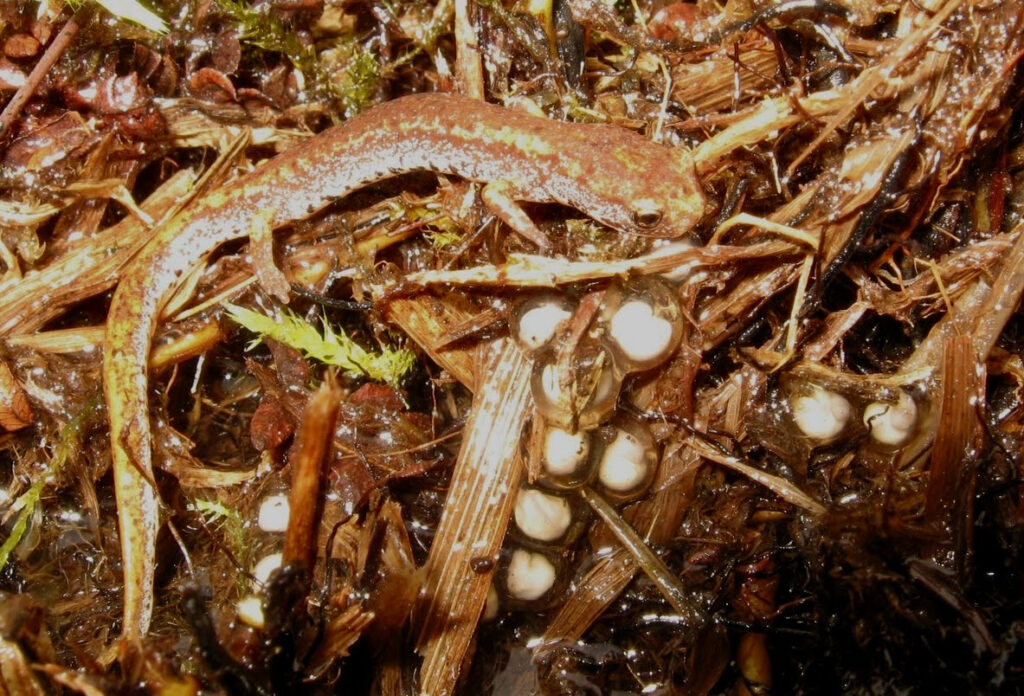
Herp Update: Recent Herp Activity, Snakes – April 29, 2025
Herp Update, April 29, 2025
Recent Herp Activity
The rains and warm temperatures on Saturday the 19th generated quite a bit of amphibian (and some reptile) movement and this resulted in many reports and photos coming our way (thanks). Here in the Lake Champlain Basin it was only later-migrating amphibian species that were on the move. My granddaughter Astrid was visiting, so we headed to Morgan Road in Salisbury. During a quick walk over and back through the crossing area we found 35 Eastern Red-backed Salamanders, two Four-toed Salamanders, and seven juvenile Wood Frogs heading into the forested swamp.
Although Eastern Red-backed Salamanders don’t lay their eggs in water, at many sites they migrate between upland wintering locations and wetter foraging and egg-laying sites.
Four-toed Salamanders lay their eggs under moss or other organic material on logs, stumps, and tussocks above the waterline. Their larvae drop into the water after they hatch. Consequently, any pool, pond, or swamp that supports Four-toeds must contain these types of structures (see photo below).
The young Wood Frogs we found were a surprise. Adult Wood Frogs had mated and laid their eggs weeks ago. In addition, these frogs were too young to mate. Apparently these youngsters were simply migrating from a choice overwintering habitat to better (wetter) foraging habitat.
The top photo below (taken by Rebecca Chalmers) shows one type of structure used by Four-toed Salamanders for egg-laying. The second photo (taken by Kiley Briggs) shows a female with her eggs. Four-toed Salamanders often lay their eggs together with other females and one of those females stays with the eggs until they hatch. We need to learn more about the distribution of Four-toed Salamanders in Vermont. Please do send us a photo if you find one.


Snakes on the Move
So far this spring we have received photo-reports of Eastern Ribbonsnakes, Common Gartersnakes, Dekay’s Brownsnakes, Red-bellied Snakes, Ring-necked Snakes, and just this week, Eastern Milksnakes. Anna Paritsky found both Red-bellieds and Dekay’s on Hibbard Road in Milton back on April 19th during a night time road search.
Regarding the Eastern Milksnakes, initially I was surprised that they were active already. They are a heat-loving species. Checking all Eastern Milksnake reports in our database, we have many late fall through early spring reports of Milksnakes, but they are all inside people’s houses where the snakes sometimes overwinter. Our earliest spring Milksnake report outdoors came via Mary Holland. She received a report of two Milksnakes out and about on April 12, 2014 in Hartland. David Hoag reported Milksnakes as early as April 13 in Grand Isle just last year. After mid-April, Milksnake reports were quite common.
Emma Cowper sent us the photo below. She saw this one last week on April 26th in Burlington. Eastern Milksnakes are sometimes mistaken for rattlesnakes due to the fact that they shake their tails when they feel threatened, but it is all a bluff. They are harmless.


